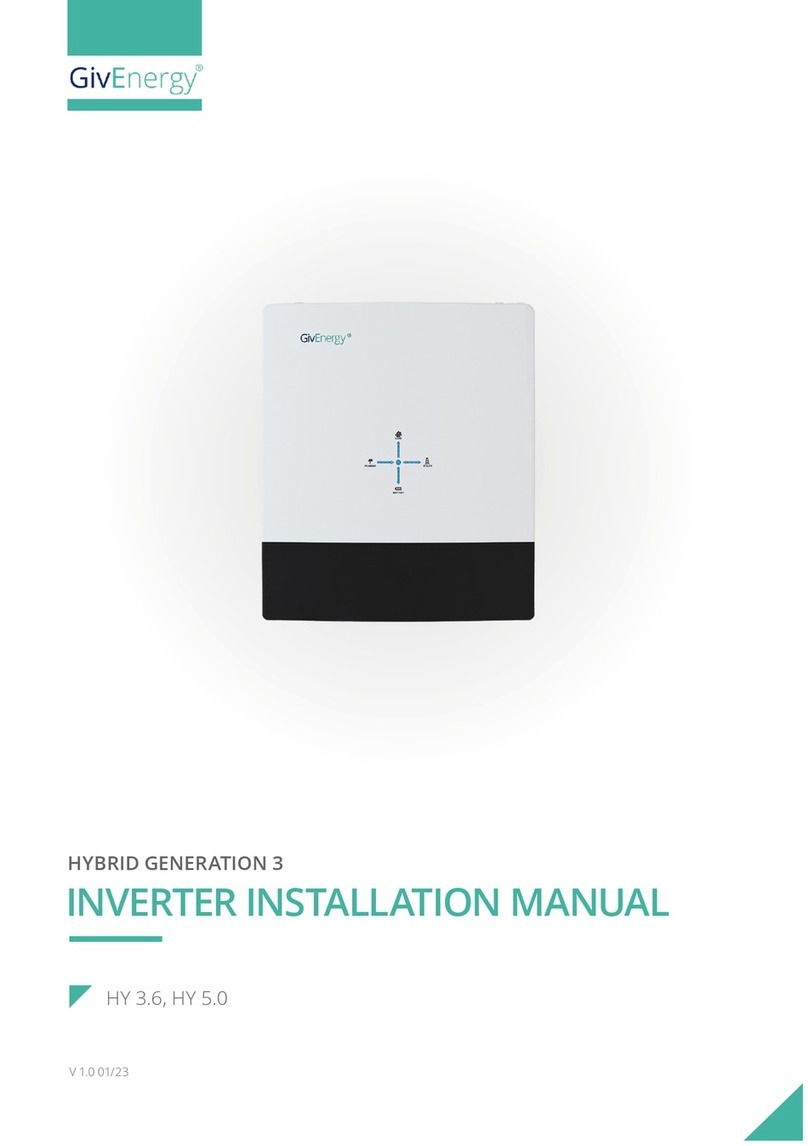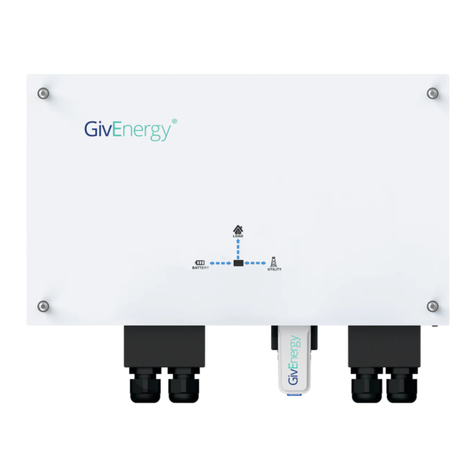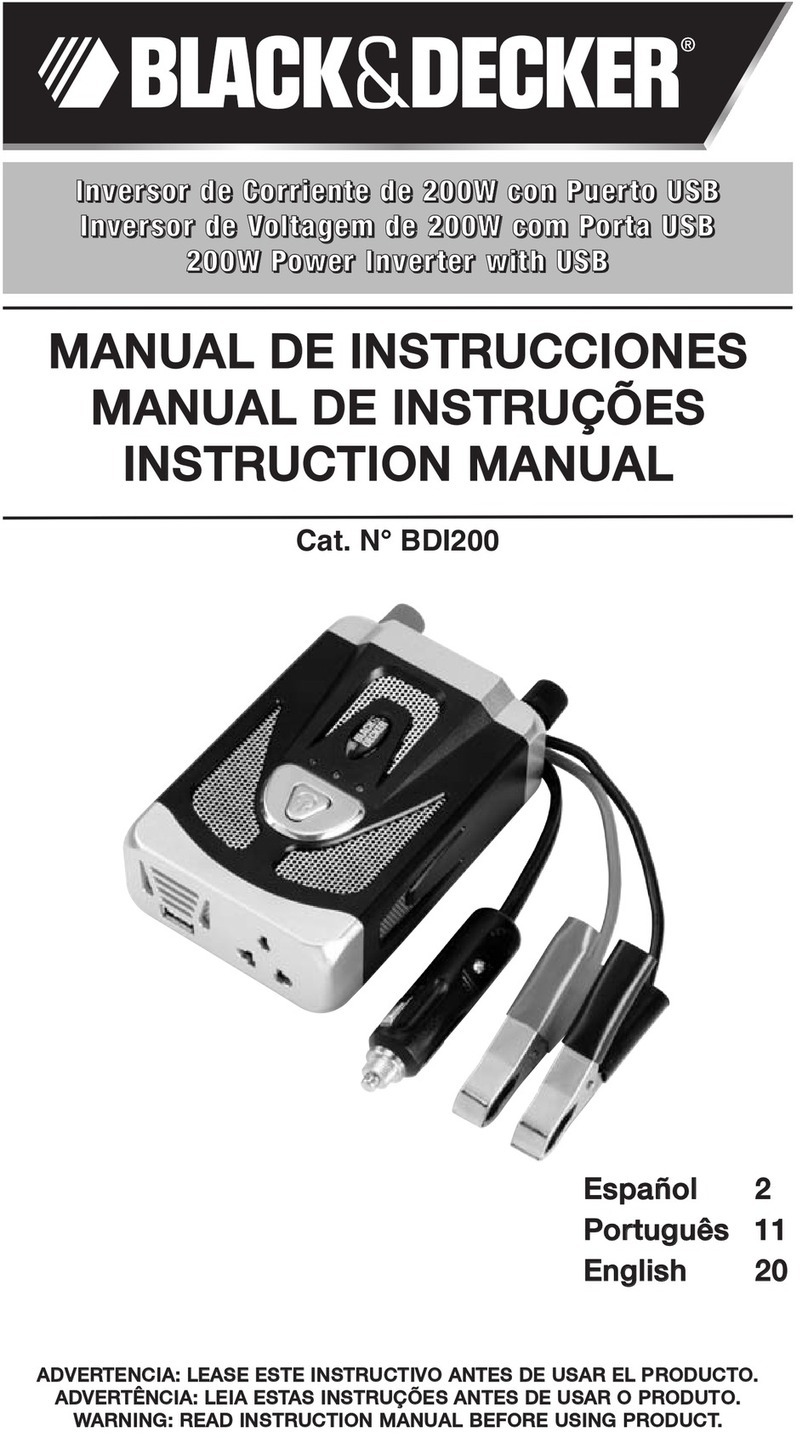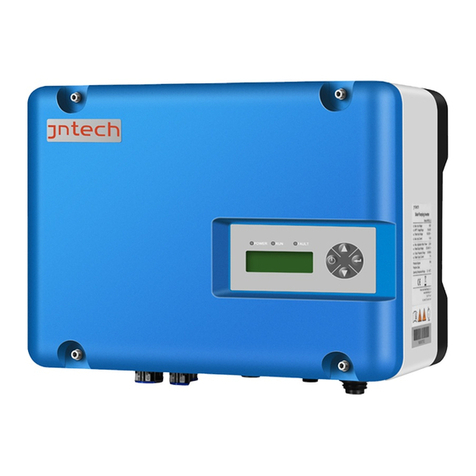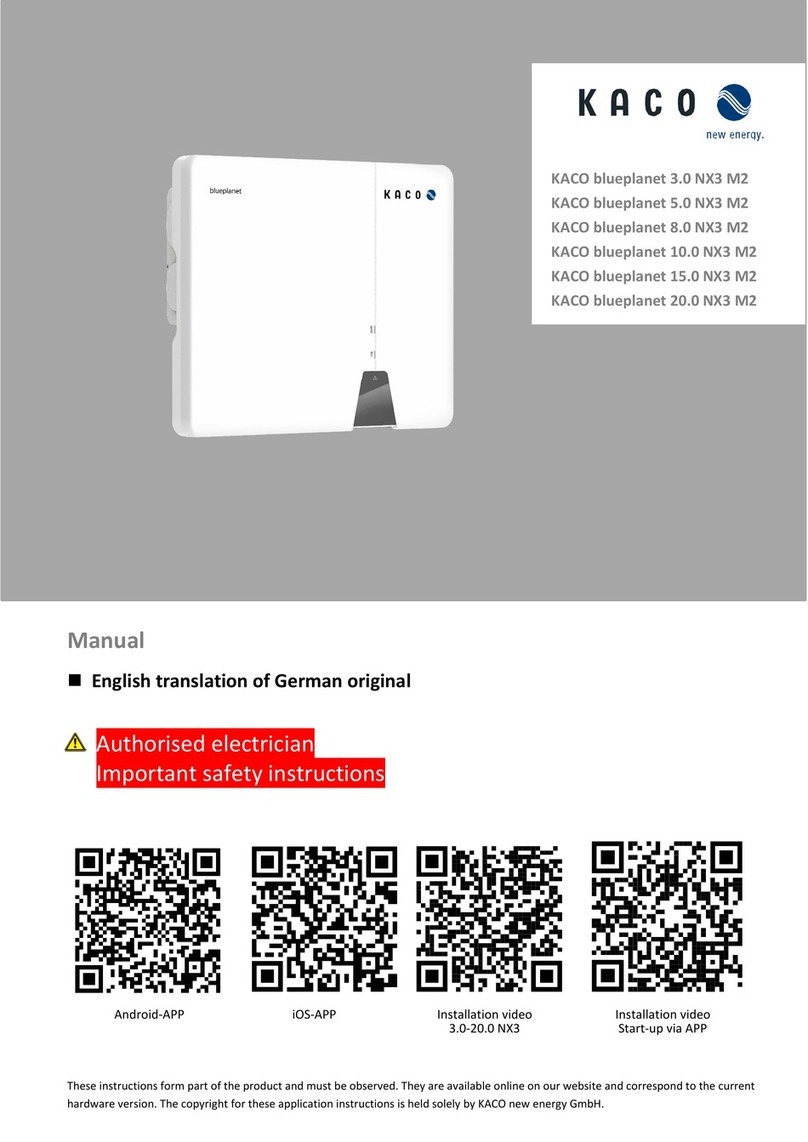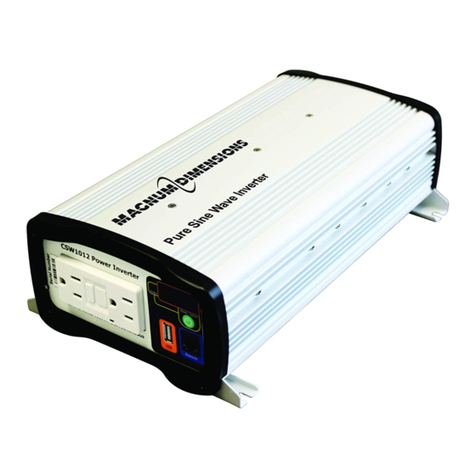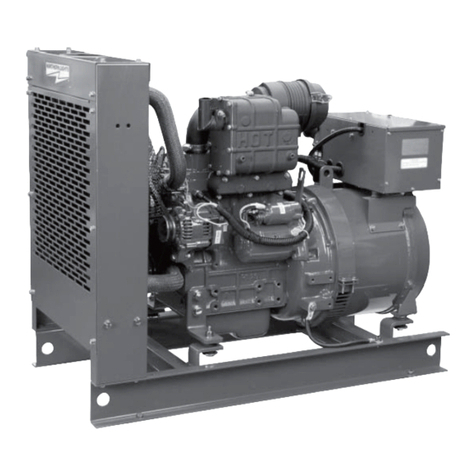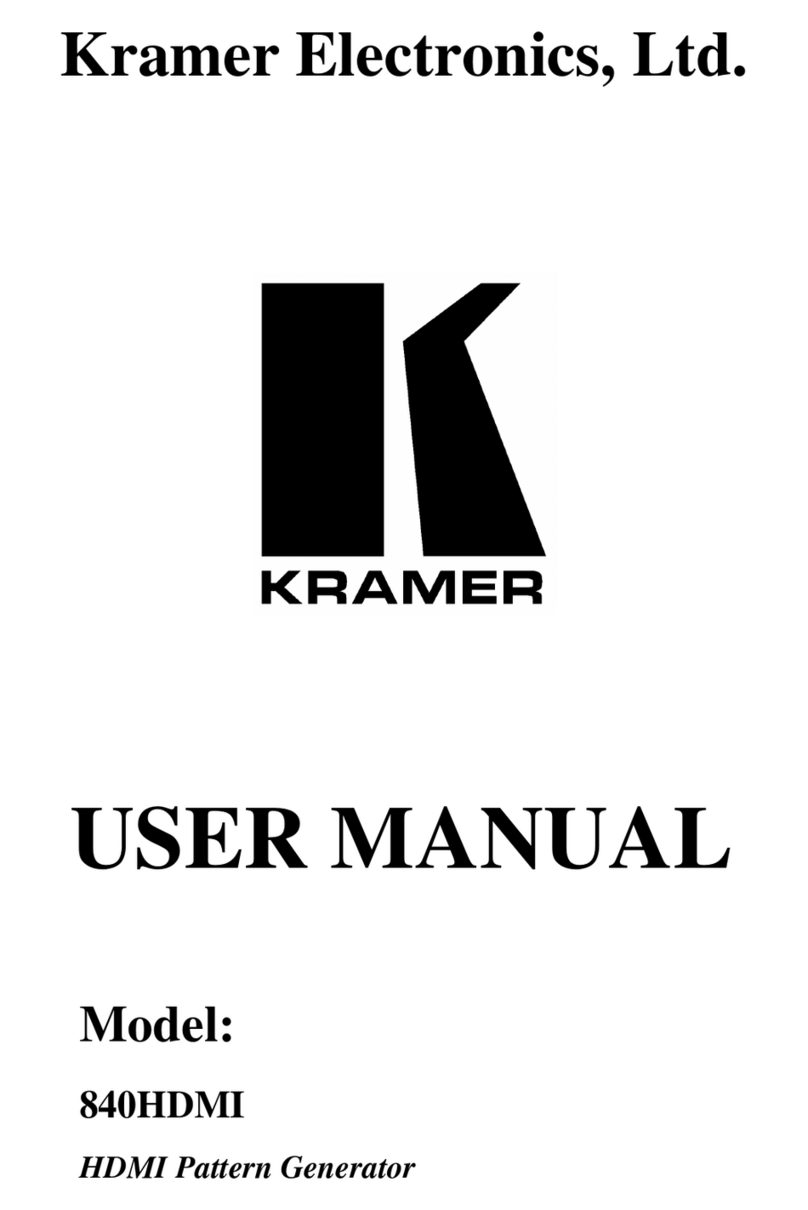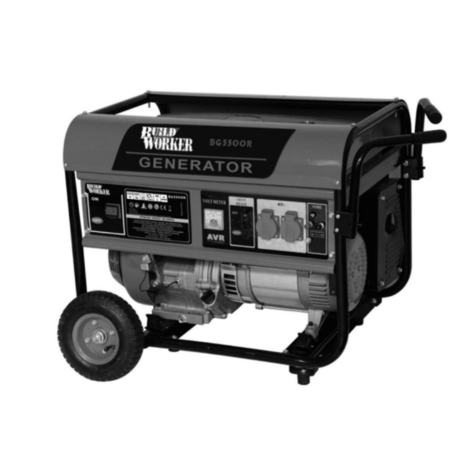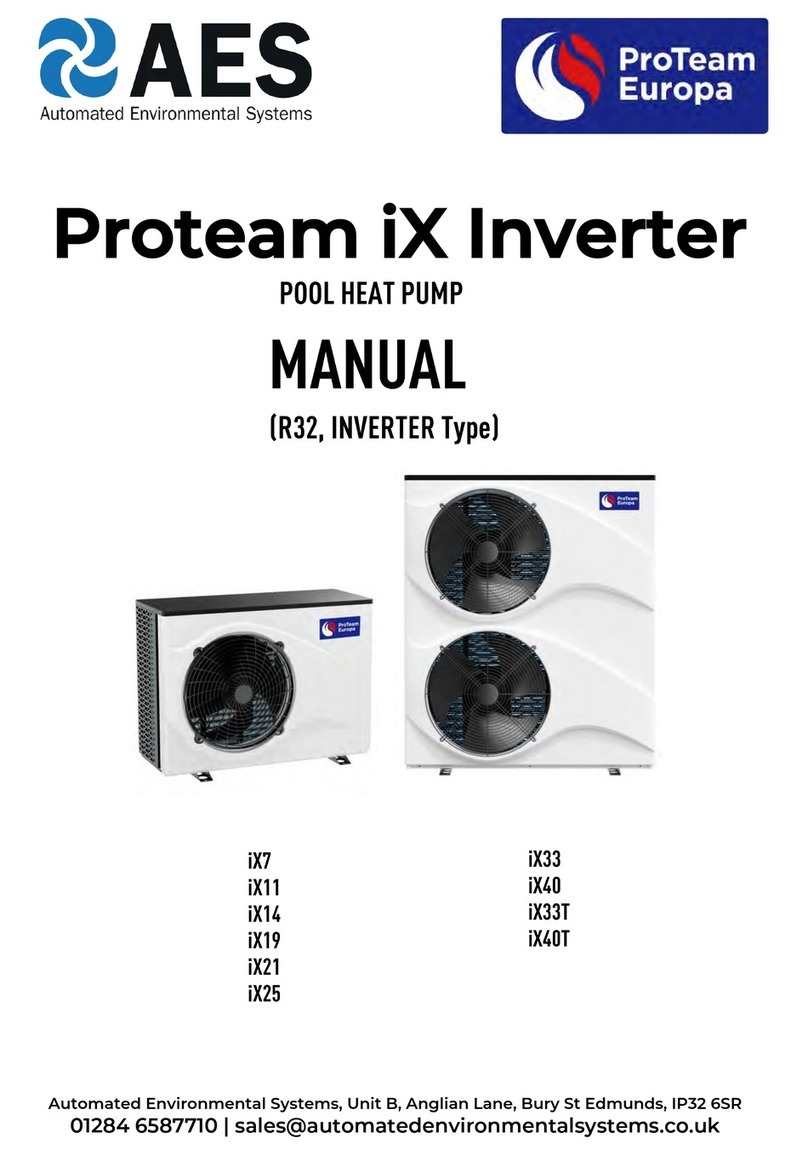GivEnergy AC 3.0 User manual

INVERTER INSTALLATION MANUAL
AC COUPLED
AC 3.0 | UK | V1.0 17.11.23

SPECIFICATIONS
Specifi cations
The GivEnergy AC Coupled Inverter works as a
standalone energy storage system or alongside
solar, hydro, or wind-turbine to store excess
energy.
Make the most of a split rate energy tariff
(e.g. Economy 7) by charging the battery at off -
peak times when energy rates are cheaper and
discharging during the more expensive periods to
reduce your overall energy bill.
Battery Inverter for all situations
PACKAGING LIST
AN ALL ROUNDER
Item Item Name Qty
InverterA1
Mounting BracketB1
BAT Wire CoverC1
DBMS, RS485 Com Wire Cover 1
EAC Terminals Cover 1
F
G
H
I
Cover Screw
AC Output Cover
Inverter Security Pin
Bracket Wall Fixings
Battery Input Terminations
16
2
4
2
A
B
G
H
D
I
Dimensions
233D x 260H x 480W (mm)
Warranty
12 years
Weight
22.4 Kg
Operational temperature
-25ºC - 60ºC with derating at 45ºC
Charge / Discharge Effi ciency
97.1%
Max. AC Output Power
3000W
Euro Effi ciency
96.5%
Max. Output Current
3200VA
C
E
F

Introduction
Installation Requirements
Installation of all GivEnergy equipment must be carried out by a GivEnergy Approved Installer.
Unit Information
The AC Coupled Inverter is bi-directional, allowing for connections to the grid and battery. The Inverter
works with existing or new generation. It can also import from the grid at off -peak times when prices
are lower, and discharge during busier periods when prices are more expensive.
Storing the Inverter
The unit must be stored in its original packaging at temperatures between 5ºC - 60ºC.
Do not stack more than 4 units on top of each other.
If any damaged or missing parts are found, please contact GivEnergy on 01377 252 874 or email
support@givenergy.co.uk immediately. Returns must be provided in original or equivalent packaging. The
cardboard packaging is recyclable.
Packaging Contents
All information contained in this booklet refers to the assembly, installation, commissioning, and
maintenance of the AC Coupled Inverter. Please retain this manual for future reference.
When unpacking, please check the following:
• There are no missing accessories from the packaging list
• The model and specifi cation of the AC Coupled Inverters’ nameplate match the order specifi cations
GENERAL INFORMATION
Item Item Name
Power Flow Direction IndicatorsA
Battery Input Terminals and CoverB
CWiFi or GPRS Com Module and USB Port
DBAT > NTC and RS485 Communication
EAC Grid and EPS Terminals
FSerial Number
GS p e c i fi c a t i o n
COMPONENTS
Legal Disclaimer: This document is property of GivEnergy, reproduction is prohibited.
A
BC
D
E
F
G

Do not install in direct sunlight or near water sources
Mount the inverter at least 3 feet above ground level (outside only)
The inverter must be installed in an easily accessible location, the status display
must be visible and not obstructed
Please ensure that the wall to be mounted on is suffi cient enough to hold the weight
of the inverter and battery pack
The inverter must be installed in a well ventilated area, the ambient temperature
should be below 40ºC to ensure optimal operation
The inverter must be installed vertically with connections always positioned at the
bottom, never install horizontally, and avoid tilting the unit
Extra care and attention must be taken when installing and maintaining any GivEnergy equipment.
The system is capable of retaining a high voltage, even when disconnected.
Safety Instructions
SAFETY AND INSTALLATION
All electrical installations must be carried out by a qualifi ed and registered Electrician and in accordance
with the local wiring regulations
During operation, the heat sink may become hot. Do not touch the heat sink at the sides, or top of
the inverter when in operation
The inverter is designed to be connected to the grid; connecting your inverter to a generator or
other power source can result in damage to the inverter or external devices
All GivEnergy equipment must be installed by a GivEnergy Approved Installer
If you suspect something is wrong with the inverter, or if there are any missing/damaged parts contact
GivEnergy on 01377 252 874 or email support@givenergy.co.uk
Precautions
CONNECTING THE BATTERY TO THE INVERTER
It is very important for system safety and effi cient operation to use appropriate cables for battery
connections. 16mm2(minimum) tri-rated cables must be used for DC battery connections
The battery must be installed in accordance with the Battery Installation Guide
The batteries must not be connected in series
The voltage of the battery connected must not exceed 60V (or it will damage the inverter and void any
warranty)
Only GivEnergy batteries should be connected to our inverters
Reversed polarity will damage the inverter

Wall thickness for mounting the inverter should be suitable for the weight of the equipment.
Place the wall mounting bracket horizontally onto the wall and mark the position of the bracket
holes.
1.
Drill 4 holes at the marked positions to a suitable depth for the fi xings to be used. Fix the
mounting rack to the wall using 4 M6x50 expansion bolts or hardware suitable for the wall type.
2.
STEP-BY-STEP INSTALLATION
Please note: If fi tting inverter to a non-masonry wall, diff erent fi xings will be required.
Mount the inverter onto the mounting bracket.
3.
Insert the 2 security clips on the left and right side to prevent the inverter from being lifted off the
bracket.
Security
clips
4.
If fi tting inverter to a non-masonry wall, diff erent fi xings will be required.

Item Item Name
CONNECTIONS OVERVIEW
There must be adequate clearance around the inverter to allow for heat dissipation. The diagram
below illustrates the space required around the inverter.
CLEARANCE AND MAINTENANCE
When maintaining and cleaning the inverter, the whole system must be powered down. Please refrain
from using cleaning products on the surface of the inverter.
To ensure your inverter operates optimally at all times, annual maintenance checks need to be carried out.
Check for visible damage or discolouration of the cables, and that they are intact. Please ensure that the
top of the inverter is not obstructed in any way.
Space Clearance
Maintenance
C
B
D
E
A
Battery DC Ring TerminalsA
EPS ConnectionsC
BUSB Input
DAC Connections
EBattery and Meter communcations
300mm
300mm
250mm
250mm250mm
250mm
300mm
300mm

CONNECTING TO THE EPS
The Emergency Power Supply (EPS) can provide a maximum output power of 3000W (battery dependent)
during a grid failure. This output must be protected as close to the inverter as possible, with a double pole
30mA RCD and overload protection rated at up to 20A.
There are four approved methods to connect to the EPS, please refer to the EPS Connection Guide on our
Knowledge Base for more information.
If the backup terminals are used, please ensure the following:
The EPS MAX output power is 3000W. If the load is greater than 3000W
the inverter will stop outputting and going to fault. The EPS output will only
operate when the battery(s) have capacity available.
Any other grid tied generation must be supplied from the grid side of any
changeover switch to avoid damage to the inverter, and void in warranty (see
the following diagrams for reference).
Backup
connection
terminals
Cable size requirements for the AC Coupled Inverter are:
The recommended maximum cable length should not exceed 50m as the resistance of the cable will
consume inverter output power and reduce the inverter effi ciency.
AC UTILITY GRID CONNECTION
AC Supply
connection
terminals
AC 3.0 - minimum 2.5mm²
You must install a seperate AC circuit-breaker per inverter in order to ensure that it is adequately protected
and can be safely disconnected under load.
L N E
An earth rod must be installed and connected to the main earthing terminal, as close to the origin of
supply, and adequate overload / short circuit protection is installed in accordance with the local wiring
regulations.
L N E

Incorrect wiring of full property back-up with manual or automatic change over switch:
PV Inverters
Supply
Meter
DNO
Cut Out
Manual
Changeover
Switch
Existing Consumer Units
New ‘Grid’ Consumer Unit
Grid Supply
EPS Output
FULL PROPERTY BACKUP
PV Inverters
Supply
Meter
DNO
Cut Out
Manual
Changeover
Switch
Existing Consumer Units
New ‘Grid’ Consumer Unit
Correct wiring of full property back-up with manual or automatic change over switch:
Grid Supply
EPS Output

CONNECTING THE BATTERY TO THE INVERTER
A DC MCB must be installed between the master battery and the inverter of Gen 1 batteries (not
less than 100A), this will ensure the inverter can be safely disconnected during maintenance.
Please note that a separate DC MCB is not required with Gen 2 batteries as they have one
integrated, unless Gen 1 batteries are installed after a Gen 2 battery pack.
1.
Check the battery nominal voltage and polarity. When connecting a Gen 1 inverter to a Gen 1
battery (2.6kWh, 5.2kWh, 8.2kWh), a ring terminal to ring terminal cable must be used.
Comms
cable
Power cable
2.
Generation 1 battery only
When connecting a Gen 1 inverter to a Gen 2 battery (9.5kWh), a ring terminal to all in one
cable must be used. Connect the ring terminal cable onto the battery terminal connection
on the inverter. The other end can then be connected to the A-socket on the Gen 2 battery
(ensure that the red clip is facing away from the inverter, and is pushed in securely).
3.
If connecting additional Gen 1 batteries after a Gen 2 battery, you must install a DC MCB
in between the Gen 2 and the Gen 1 battery to ensure that the Gen 1 battery can be safely
isolated.
4.
Installation of additional batteries
Generation 2 battery only

CONNECTING MID APPROVED METER TO INVERTERMONITORING PV SYSTEM
In the system, a mid approved meter must be installed to ensure correct monitoring of the grid power. The
inverter uses this information to decide whether to charge or discharge the battery.
The CT clamp that is connected to the mid approved meter must be installed around the live incoming
supply to the property, with the arrow pointing in the direction of grid import, in order to monitor the
complete consumption of the building. Ensure that the meter used is approved for use with GivEnergy
equipment.
The blue CT clamp supplied shall be used to monitor a single source of generation. The CT clamp must be
installed around the live supply cable of the inverter, with the arrow pointing back towards the consumer
unit.
Grid
Meter
CT
string
inverter
Blue CT Method
Meter Method
string
inverter
string
inverter

START-UP AND SHUT-DOWN OF THE INVERTER
Start-Up Procedure
Shutdown Procedure
Connect the AC circuit breaker, ensure that the system is powered and commissioned using
the portal/App. Ensure that the grid power is reading identical to that of the mid approved
meter (this can be found on the screen of the meter).
1.
Turn off the battery1.
Disconnect the AC circuit breaker to prevent it from being reactivated2.
Turn on the battery breaker2.
Disconnect the battery breaker to prevent it from being reactivated3.
The inverter will start automatically when the battery voltage is higher than 46.4V
4.
Check the inverter operating status4.
Wait until all LEDs have gone out. The inverter is now shut down
5.
3. Turn on the battery
COMMISSIONING A SYSTEM
All systems must be commissioned to ensure correct battery and meter communications, as well as
connection to the online portal.
Check that all the wires are securely connected before the battery breaker and the AC isolator is
switched on. You MUST set the parameters of the battery according to your battery system.
Note: Without commissioning, the system may not operate correctly.
Sign into the online portal at https://portal.givenergy.cloud with your GivEnergy Engineer login.
If you are a fi rst time user, and you do not have an account or Engineer login, please consult your
supplier to get this set up.
Accessing the Commissioning Portal
To download a fully illustrated guide, please visit our Knowledge Base at www.givenergy.co.uk

DECOMMISSIONING A SYSTEM
Uninstalling the Inverter
If possible, always pack the inverter in its orginal packaging and secure it with tension belts. If this is not
available, you may also use an equivalent sized box. The box must be capable of being closed completely
and be strong enough to support both the weight and the size of the inverter.
Packaging the Inverter
Store the inverter in a dry place where ambient temperatures are always between -25ºC and +60ºC
Storing the Inverter
Follow the shut-down procedure
1.
Remove all connections and cables from the inverter2.
Remove the locking pins which are securing the inverter to the bracket
3.
Lift the inverter off the bracket4.
Remove the wall bracket5.
WORK MODES
The system optimises the delivery of generated power (if available) and battery power to
prioritise the home load. Grid power is used as a last resort if the generation or battery power
are unavailable.
Eco Mode
This is prioritised to charge the battery during off peak times when energy is cheaper, greener,
and cleaner. The battery will start to discharge outside of the off peak time when energy is
more expensive.
Off Peak Charging
The system has the ability to be used in the event of a power cut. To utilise this feature, circuits
must be connected to the inverter’s EPS terminals.
To download a fully illustrated guide on connecting the inverter to the EPS, please visit our
Knowledge Base at www.givenergy.co.uk.
Back Up / Island Mode

MANUFACTURER WARRANTIES
This inverter is covered by a 12-year warranty.
Products Covered
Legal Disclaimer: This document is property of GivEnergy, reproduction is prohibited.
12 years
AC Coupled Inverter 3.0
12 years
AC Coupled Inverter

SCAN ME
TO ACCESS ALL
AVAILABLE RESOURCES
Table of contents
Other GivEnergy Inverter manuals
Popular Inverter manuals by other brands

Mitsubishi Electric
Mitsubishi Electric 800 Series instruction manual
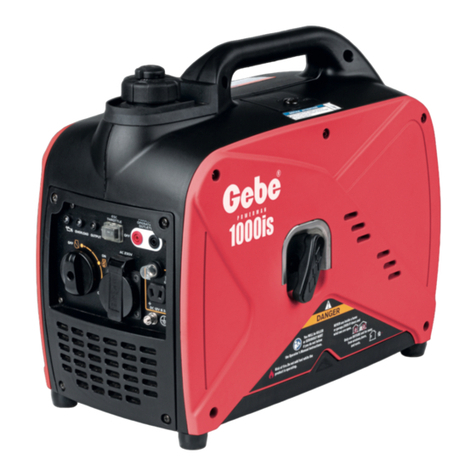
Krigsvoll
Krigsvoll GeBe POWERMAN 1000is manual
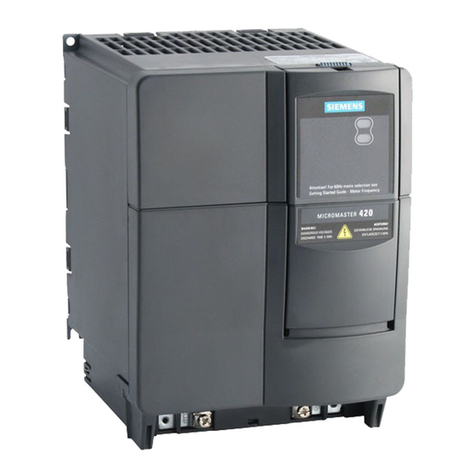
Siemens
Siemens MICROMASTER 420 operating instructions

GÜDE
GÜDE GIS 160 WIG/HF Translation of the original instructions
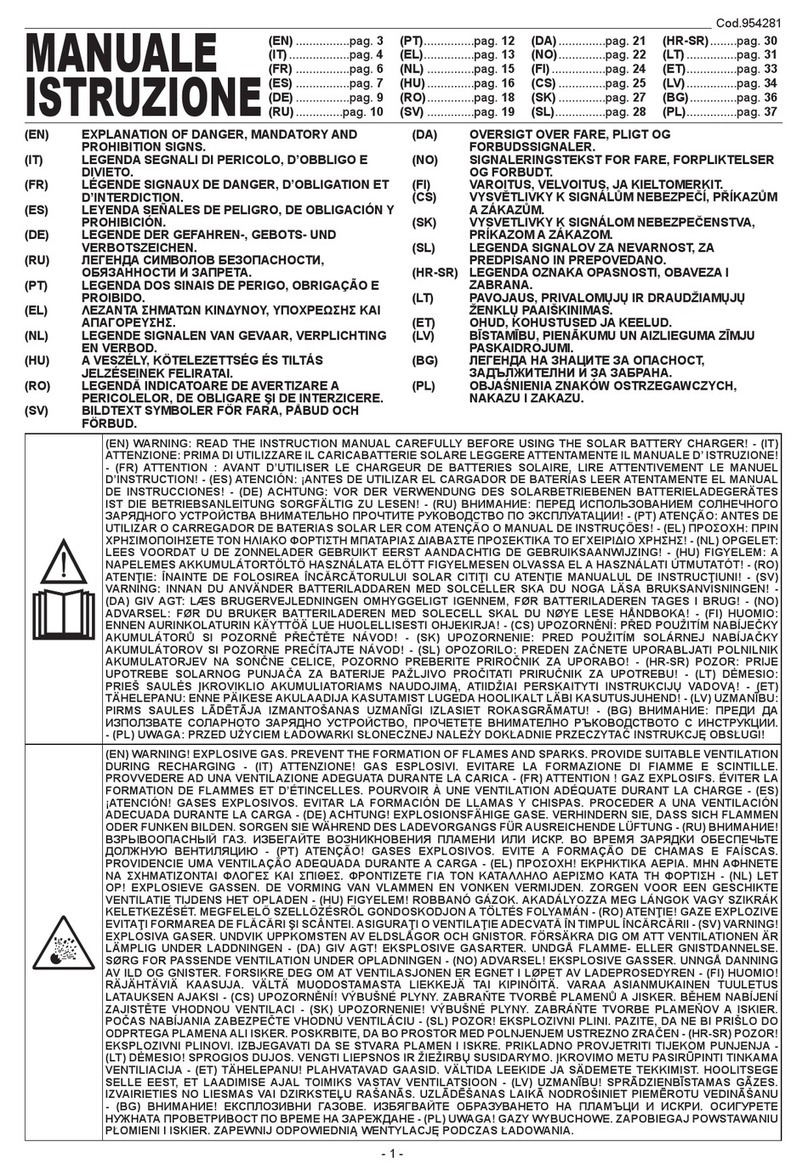
Telwin
Telwin Solara Flexo 10.0 instruction manual
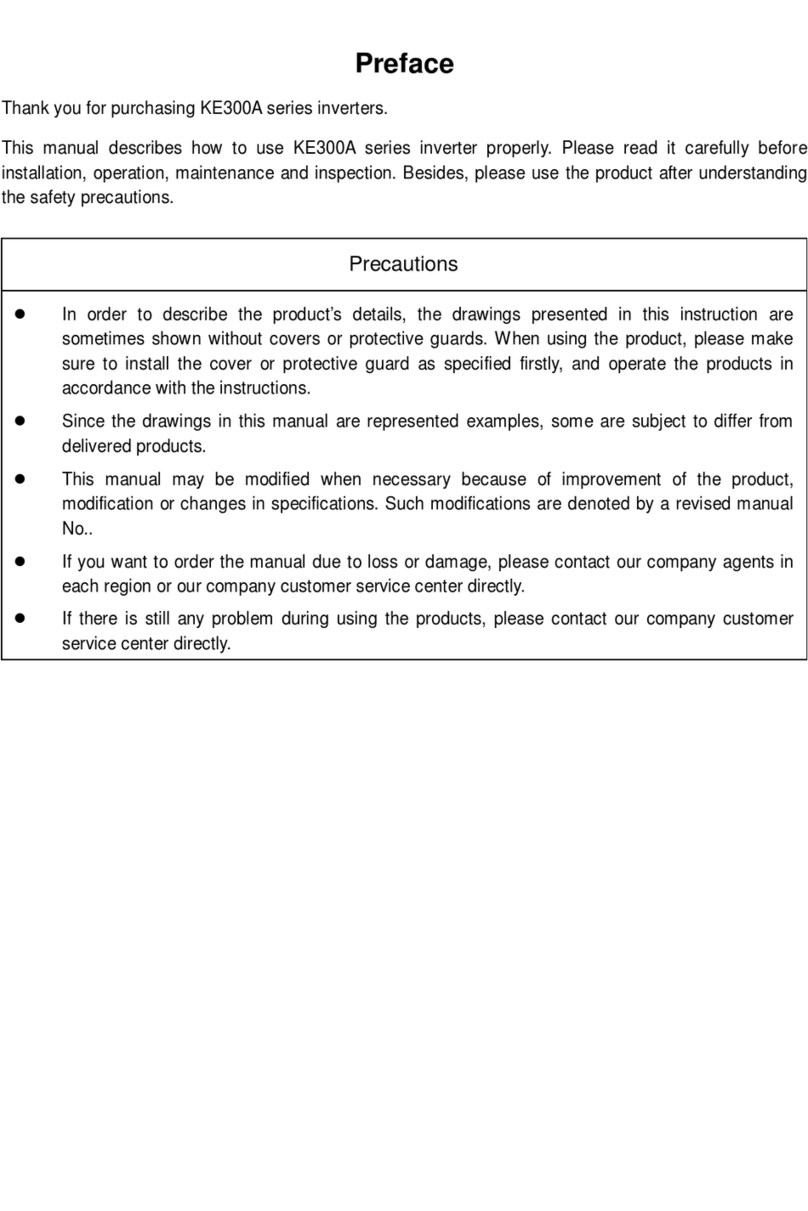
Micno
Micno KE300A Series manual

